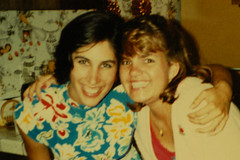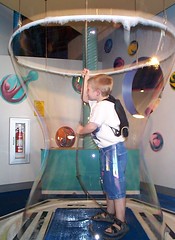To my loyal readers and new visitors,
You can read my long and rambling post below, or take a shortcut here and offer any help you can.
Lynette is my oldest friend. That is to say, I have known her longer than any other friend I have (she’s younger than I am, really). We met in the summer between 5th and 6th grade and we were practically inseparable throughout junior high and high school. Her mom drove us to toilet paper the house of a cute boy. We took French class together with Madame Schaag “Allez, ne discute pas tout le temps!”. We swindled Mr. Lees into letting us retake our flunked algebra tests. We worked together at Marshalls, flirting with every newly hired boy who came through the automated doors. The same weekend we graduated from high school, we jetted off to Waikiki for a week of tropical fun (the drinking age was just 18 then). Sun Country Wine Coolers, Mai Tais, and Blue Hawaiis sustained us on that trip. We never puked, and we weren’t hungover until 2 days after we got back to California. Ahh, those were the days.
See?

In 2002, Lynette and her husband Chris welcomed a baby boy into their lives. Sebastian was born prematurely, and spent much his early life in the hospital. I did not know what to do for Lynette to make things easier for her, but I recall one night when we caught up on the phone, I commiserated with her, sharing stories of hospital rooms and doctors and nurses and IVs (I was taking care of Jamie back then). I also remember at that time, wishing that we could have been discussing how cute the new guy in Marshall’s shoe department was, or the latest Adam Ant video, or some such nonsense. But we were adults now and we were dealing with real life.
Today Sebastian is a cute and cheerful 4 1/2 year-old boy. He is also a boy with a rare genetic disease called Severe Combined Immunodeficiency (SCID). What this means is that Sebastian doesn’t really have his own immune system. He is highly susceptible to picking up infections and easily getting sick. Very sick. What would be an inconvenient cold to us could be fatal to Sebastian.
Lynette and Chris have researched treatments and possible cures for their little boy. They found a clinical trial in gene therapy and Sebastian has been accepted to participate. Lynette, Chris, and Sebastian will leave their Bay Area home, friends, and family and move to Milan, Italy in the spring, for a 6-month course of treatment for Sebastian. While a portion of the medical expenses will be covered by grants, a fund has been set up in Sebastian’s name to help pay for additional costs they will incur while overseas, and U.S. expenses such as the mortgage payments on their home.
If you would like to help out my dear friend, please send a donation to
The Sebastian Westfall Fund
c/o The First Republic Bank
1625 The Alameda, Suite 100
San Jose, CA 95126
EDITED TO ADD: If you’re not in a position to help financially, please keep the Westfall family in your thoughts and prayers, and send them good vibes and mojo in lieu of monetary support. And if you’d like to link to Sebastian’s blog or add it to your blogroll, please fell free to spread the word. Thank you!
Backlink URL: http://www.catheroo.com/2007/01/05/a-favor/



